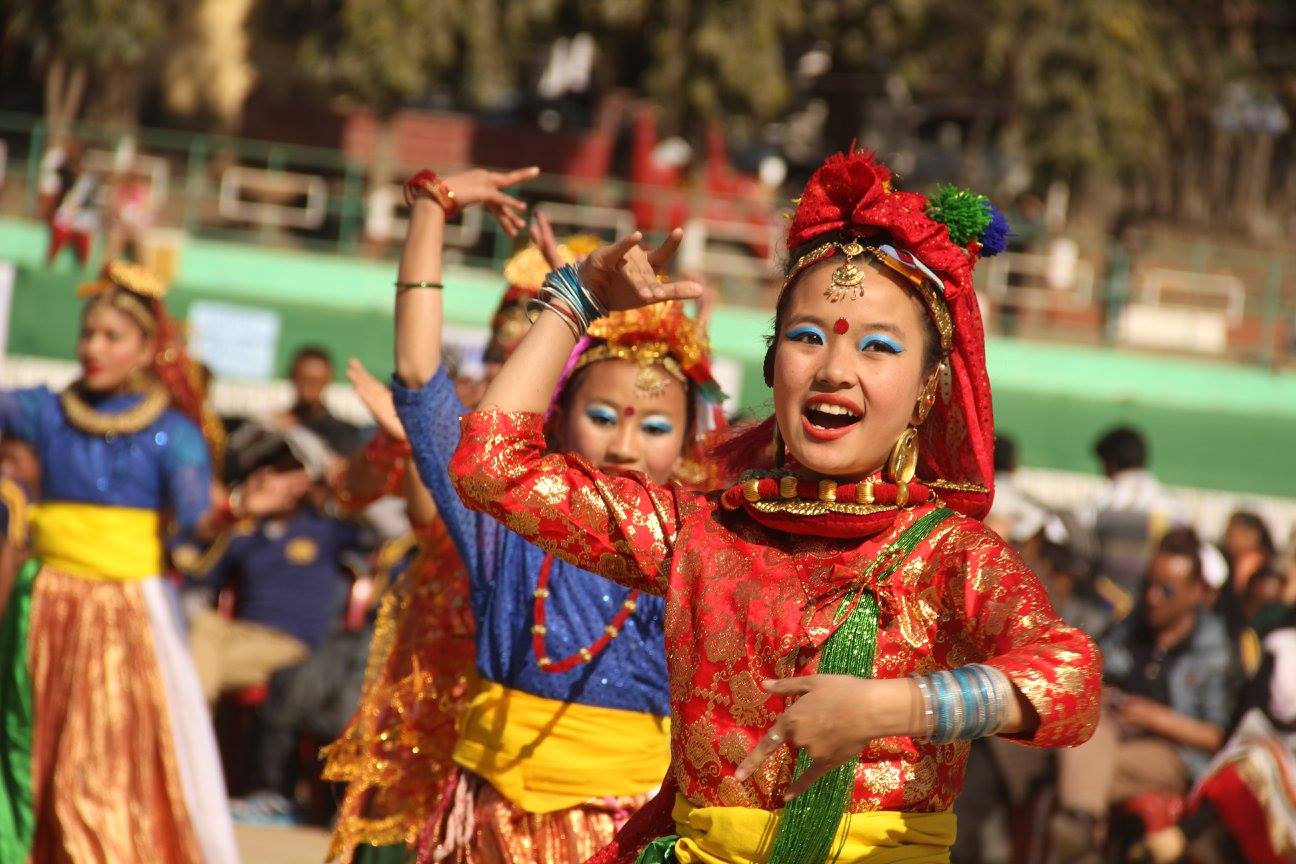Folk Dance of Sikkim:
Sikkim, a multiracial state, has received praise on a national and international level for its indigenous culture and traditions. Sikkim’s entire population can be divided up into a number of different ethnic groupings. Every one of the groups has its own language, culture, heritage, traditions, and dancing styles. There are many possibilities to see Sikkim’s typical folk dance throughout the joyous celebrations and festivities.
The variety of the ethnic groups creates a distinctive and varied dancing style that is well-known among the Sikkimese. Sikkim’s diverse dance represents inter-racial peace, love, honesty, and respect. Bhutias, Nepalis, and Lepchas are the three main ethnic groups in Sikkim, and each has its own distinct language, cultural practices, and dancing styles.
Popular Sikkim Folk Dance
1.Chu Faat Dance
On the 15th day of the 7th month of the Northern Buddhist calendar, this dance is specifically performed. This dance was done by the Lepcha community to honor Mount Kanchenjunga and its neighbors, Mount Narshing, Mount Kabru, and Mount Simbrum. Minerals, medications, salt, and food grains are thought to be present in these mountains. Therefore, their potency is well known through dance.
2.Sikmari Dance
The Sikmari Dance is performed by the Lepchas to celebrate the beauty of nature. All of the state’s kids get together to perform this style of dance in order to honor the beauty of the natural world.
4.Singhi Cham Dance
The Bhutia community’s herdsmen have a strong bond with animals. The mythical snow lion, which is unique to the Trans Himalayan region, is honored through the Singhi Cham dance.
5.Yak Cham Dance
The Yak Cham dance is performed by the Bhutia community to celebrate the yak, as its name suggests. Many families are dependent on yaks for their survival since they use their wool on a daily basis. For this reason, a unique dance is performed to honor the yak. The relationship between the herdsman and the yak is portrayed in this traditional dance.
5. Denzong Gnenha Dance
The Denzong Gnenha may be a devotional dance to demonstrate the Bhutia community’s strong belief in their native deities. Dancers wearing distinctive headgear created by Sikkimese women appreciate the sweetness of nature.
6.Tashi Yangku Dance
Tashi Yangku was said to bring favorable fortune to the region. The Bhutia society holds that there are a number of Gods and Goddesses who have the power to regulate various natural occurrences, including floods, landslides, droughts, snowfalls, and so forth. The Tashi Yangku dance is performed to thank the Gods for the region’s ongoing prosperity and peace.
7.Khukuri Naach
In Sikkim, the name Khukuri denotes bravery. This frequently resembles a warrior dance and shows how soldiers march into battle. A Khukuri was carried by each dancer as a symbol of victory.
8.Maruni Dance
One of the oldest dances practiced by the Sikkim is the Maruni dance. The Sikkim community performs this dance at family gatherings including weddings and births as well as during the Tihar festival. The dance commemorates the idea of good triumphing over evil.
9.Chukey Naach
One of the most well-known Sikkimese folk dances is this one. This dance is performed by kids in both genders. Any fair or festival celebrating the Mela may include this dancing style. The kids dance to the sounds of numerous musical instruments while donning flowers on their bodies and heads.

Sikkim’s traditional musical instruments
Sikkim is incredibly rich in folk musical instruments, but it is quite challenging to identify the state’s first musical instrument because it appears that all prehistoric people in the world developed some kind of music.
Only in space, not in time, do folk musical instruments exist. According to the Limboo community’s Mundhum myth, the main musical instrument was a bamboo harp called Simikla Koom (Binayo in Khas Language), which was created in antiquity for Tetlara Lahadongna by the sons of Sawa Yukphung Kemba, namely Samdang Khewa and Lingdang Khewa.
The legend claims that the Niyara Hongsing Ke of Lokpha Temba and Hongpha Temba brothers served as the next instrument and danced around the main pillar of the new house to ward off evil spirits.
Another Mundhum tale claims that Yeba and Yema Limboo priests visited the settlement of Sawa Yethangs and used their equipment, a Yegeysing pole attached to a Niyara Hongsing Ke, to ward off evil spirits. Similar to this, there are many different tales concerning how musical instruments came to be used by the many communities who lived in Sikkim in the distant past.
1. Taal
Scratching on the strings produced the sound of stringed instruments. Using a bow to rub against the strings, string instruments are played.
2.Susira
By blowing air into the node and tuning it with the fingers, wind instruments are performed. Without using any fingers to tune the node, wind instruments are played by blowing air.
3. Ghana
Beaters made of sticks or metals are used to play solid instruments like cymbals and sticks.
4.Avandya
Drums made of hollow wood or metal that have Khari glued on one side or both sides of the animal hide. Drums made of hollow wood or metal had animal skin covering on one or both sides, but the skin was not adhered with khari.
5.Sarangi
A single block of wood that had been carved out became the Sarangi. The guitar has a large fretless neck that is typically carved from a single piece of wood, along with a roughly rectangular slightly waisted body.

